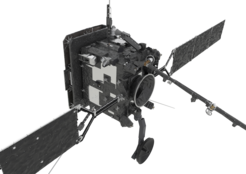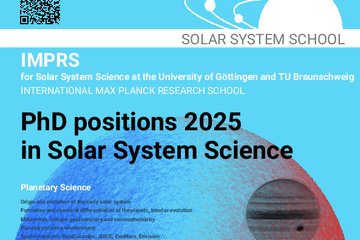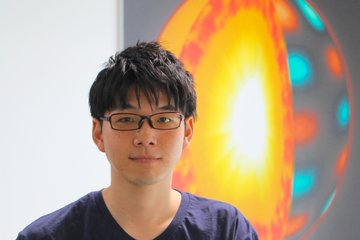Solar Orbiter: Scientific instruments are ready
The instrument commissioning of ESA's Solar Orbiter is nearly completed. So far all instruments with MPS participation are in top shape.
Since the beginning of February, ESA's Solar Orbiter spacecraft has been on route to its intended trajectory around the Sun. From there it will enjoy a unique view of our central star using its ten scientific instruments. However, this early phase of the mission is about more than just reaching the science orbit. It is an adventure of its own, especially for the participating scientists and engineers. Over the past weeks and months, they have gradually commissioned all instruments on board. So far, the results for the Max Planck Institute for Solar System Research (MPS), which is involved in four instruments, have been consistently positive: All systems are functioning as planned.

The latest good news came from the EUI team. The Extreme Ultraviolet Imager has successfully completed the hardware tests. "The instrument consists of three telescopes, which had to be commissioned one by one. That was very exciting", EUI Co-Principal Investigator Dr. Udo Schühle from MPS summarizes the work in the past weeks. EUI delivers images of the hot solar atmosphere, the so-called corona, by the second. It can thus visualize rapidly changing processes in this region.
Two other instruments with MPS participation also observe the corona. The SPICE (Spectral Imaging of the Coronal Environment) spectrograph splits the ultraviolet radiation from this region into its different wavelengths. The coronagraph Metis provides information from the transition region between corona and innermost heliosphere. Already at the end of April, both instruments were able to demonstrate that they are working flawlessly.
Among other things, the tests showed that the special strategy used by SPICE to protect itself from overheating during operation is proving successful. Unlike other instruments, SPICE lets all solar radiation enter the instrument. A mirror specially developed at MPS allows much of the radiation to pass through the spectrograph without heating it. Only a small part is processed in the instrument. "The fact that the mirror is working as planned is a great success," says Schühle, who is also a member of the SPICE team. "After all, it is exposed to all of the Sun's radiation and is therefore particularly susceptible to damage from ultraviolet radiation," he adds.
The coronagraph Metis has also successfully past the tests. Recently, the team was able to optimize the exact position of the occulter, which covers the solar disk and thus makes the corona visible. "This is a very critical step," says Dr. Luca Teriaca of MPS, Metis Co-Principal Investigator. Preliminary images look very promising.
The scientists from the PHI (Polarimetric and Helioseismic Imager) team still have to be patient for a little while. The instrument was developed and built under the leadership of MPS; the current commissioning is being coordinated there. "We have already been able to check the hardware and are very content with the instrument’s performance," says MPS scientist Dr. Johann Hirzberger, Operations Scientist for PHI. In order to prepare for the future scientific measurements, the team will in the next few days optimize the scientific pre-processing of data within the instrument.
In the next few weeks before Solar Orbiter’s cruise phase begins, all instrument teams will carry out final tests. These are intended to show that the instruments can be smoothly operated simultaneously. After all, this tenfold view of the Sun and its surroundings is the special strength of Solar Orbiter.












